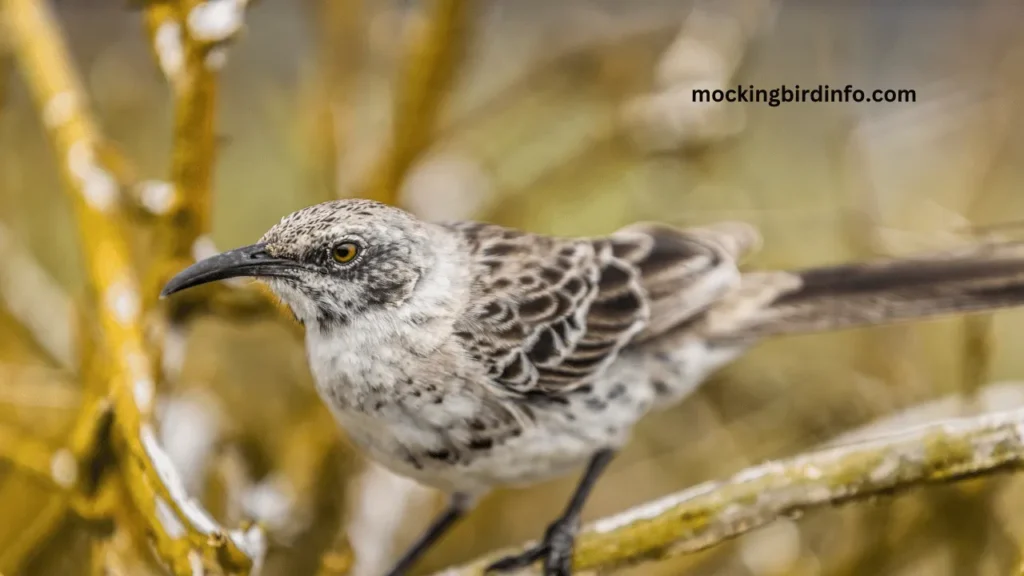There’s something enchanting about waking up to the melodic songs of a mockingbird. These birds, known for their remarkable ability to mimic the sounds of other birds and even mechanical noises, bring vibrancy to any outdoor space.
Imagine starting your day surrounded by a symphony of sounds, from chirps and trills to entirely unexpected tunes. The good news is, with a little planning, you can make your yard the perfect haven for these talented songbirds.
Creating an inviting environment for mockingbirds doesn’t have to be complicated. By understanding their natural preferences for habitat, food, and safety, you can design a space they’ll return to year after year. Plus, when you create a bird-friendly yard, you’re not only attracting mockingbirds—you’re fostering an entire mini-ecosystem.
In this guide, we’ll walk you through the essential steps to attract mockingbirds to your yard, covering everything from landscaping tips to predator protection. Let’s explore how to bring the joy of these unique birds into your life.

Contents
Understanding Mockingbird Preferences
Mockingbirds, scientifically known as Mimus polyglottos, thrive in environments that mimic their natural habitats. They are drawn to open areas interspersed with dense vegetation, which provide them with the perfect mix of space for foraging and safe spots for nesting.
Key features of their ideal habitat include:
- Shrubs and small trees: Mockingbirds prefer thick, bushy areas where they can build their nests safely. Species like holly, rose bushes, and privet are common choices.
- Tall perches: These birds use perches, such as tree branches or telephone poles, as platforms for singing and scouting for threats.
- Open ground for foraging: Mockingbirds search for insects on the ground, so a combination of grassy areas and garden beds works well.
Their diet is another crucial aspect. Mockingbirds are omnivores, meaning they eat a variety of foods. Their diet primarily consists of:
- Insects like beetles, ants, and grasshoppers.
- Berries and fruits such as elderberries, blackberries, and serviceberries.
- Occasional seeds and plant matter.
Water sources are essential for mockingbirds. They rely on a dependable source of water for both drinking and bathing, which helps them maintain their feathers in top condition.
A birdbath, fountain, or shallow water dish is a great way to invite them to your space. Ensure the water stays fresh and clean, as stagnant water can deter birds and attract mosquitoes.
Creating a Bird-Friendly Habitat
Designing a yard that attracts mockingbirds means planting a variety of native plants that can support their natural behaviors. Native plants are especially effective because they align with the local ecosystem, offering food and shelter that exotic plants often can’t provide. Some excellent options include:
- Hawthorns, serviceberries, and dogwoods for their berries.
- Sumac and viburnums, which also provide dense foliage for nesting.
Creating a diverse landscape is another critical component. Think of your yard as a layered habitat with low-growing flowers, medium-sized shrubs, and tall trees. This structure not only looks appealing but also provides different levels of foraging and nesting opportunities for mockingbirds.
For nesting, these birds typically prefer thick shrubs or low trees that offer ample cover from predators and harsh weather. Evergreen shrubs like juniper and boxwood, or deciduous bushes like privet, work well.
If you don’t have suitable plants, installing a birdhouse can serve as an alternative, although mockingbirds usually prefer natural nests.
Flowering plants that attract insects are invaluable since mockingbirds feast on insects, especially during breeding season when protein-rich food is necessary for their young. Plants like goldenrod and coneflower help create a balanced environment that supports the bird’s diet.

Providing Food and Water
When it comes to food, mockingbirds are not typically seed-feeder birds. Instead, they’re more inclined to visit areas where they can pick at fruits or insects. To support this, consider adding platform feeders where you can place items such as:
- Chopped fruits like apples and grapes.
- Dried raisins or cranberries.
- Mealworms, which are a high-protein treat that mockingbirds love.
For additional nourishment, you can put out suet cakes that include a mix of fats and seeds. These provide energy, particularly during colder months when other food sources are scarce.
Water features enhance your yard’s appeal to mockingbirds. A simple birdbath can suffice, but a moving water feature like a small fountain or bubbler is even better, as the sound of running water naturally attracts birds. Be sure to clean the water feature regularly to prevent algae buildup and keep the water fresh.
Adding a few stones or a shallow rim to your birdbath can give the birds a place to stand securely as they drink or bathe. This attention to detail ensures that your water source is as inviting as possible.
Deterring Predators
One challenge when attracting mockingbirds is ensuring they stay safe from predators. Cats pose one of the biggest threats to mockingbirds and other backyard birds. To protect against cats:
- Install motion-activated sprinklers that deter them with sudden movements.
- Scatter citrus peels or scented deterrents around the yard, as many cats dislike these smells.
Birdproofing your yard can also involve simple adjustments. For example, placing baffles on bird feeder poles prevents predators like raccoons and squirrels from climbing. Adding predator guards around tree trunks can also keep climbing predators at bay.
Keep feeders and nesting sites at least 10 feet from structures like fences or large branches that cats or squirrels might use as jumping points. This spacing helps reduce the risk of predators reaching the birds and their nests.
Encouraging Mockingbird Song
A huge part of the allure of mockingbirds is their beautiful and varied song. To encourage this behavior:
- Create a serene environment: Limit noisy activities in your yard, particularly in the early mornings and late afternoons when birds are most vocal. Mockingbirds are more inclined to sing in peaceful settings where they feel secure.
- Spread food sources around your yard**: Having multiple food and water stations can encourage mockingbirds to establish territories and engage in their characteristic singing to mark and defend their space.
Mockingbirds often sing more vigorously during the breeding season, from late spring to summer. If you have created a suitable habitat, you may even hear them singing well into the night during this period.
Conclusion
Attracting mockingbirds to your yard can be a rewarding endeavor. With the right combination of food, water, safe nesting sites, and predator deterrence, you can transform your outdoor space into a haven for these incredible birds.
By planting native plants, ensuring clean water, and creating a peaceful environment, you’re not just inviting birds to visit—you’re offering them a place to thrive. Beyond the practical benefits, having mockingbirds around adds a touch of magic to your yard.
Their songs bring life, joy, and a connection to the natural world that few other experiences can match. So start with a few simple changes, and watch as your yard becomes a stage for one of nature’s most talented performers.
The reward of hearing a mockingbird’s song and watching them flourish in your space is well worth the effort. Embrace this journey, and enjoy the peace and beauty these birds bring into your life.
FAQs
1. What types of plants do mockingbirds prefer?
Mockingbirds prefer native plants that bear fruit and attract insects, such as elderberries, mulberries, and sumac.
2. Do mockingbirds come to bird feeders?
They do, especially if the feeders offer fruits or mealworms. Platform feeders or trays work best for them.
3. What do mockingbirds eat?
They eat a diet of insects, fruits, berries, and occasionally seeds.
4. How can I provide water for mockingbirds?
Use a birdbath, fountain, or dish, keeping it clean and fresh. Moving water is especially appealing to them.
5. What is the best time to attract mockingbirds?
Early morning and evening are prime times for activity, but you can spot them throughout the day, especially during breeding season.
6. How can I protect mockingbirds from cats?
Install motion-activated sprinklers and position feeders and nests out of reach from potential jumping points.








